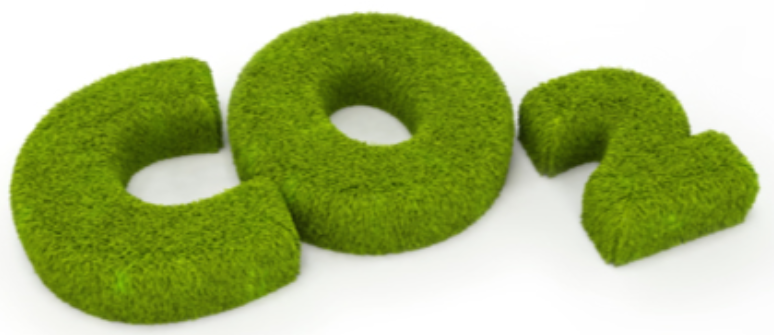
Why we eat and breathe
By David Wojick
Spring and summer is the time of growth, with blossoms everywhere we look. Leaves and fruit on the trees, grass in the yard and pastures, vegetables in the garden, crops in the field.
Did you know that all of this lush abundance is almost entirely composed of just two things? These are carbon dioxide and water. There are tiny bits of other stuff but basically it is all carbon dioxide and water. This is the true miracle of life. Every living thing we see is made from air and water. So are we.
Have you ever wondered why we eat and breathe? Here is how it works, the miracle of life.
We eat and breathe because the cells that make up our body eat and breathe. All cells eat and breathe. Yes, plants inhale and exhale just as we do. They also consume food and water.
Our breathing and eating actually go together. We are part of what is called the carbon cycle, which is the cycle of life. Plants come first, then us.
The plants use sunlight to convert the carbon dioxide and water into big organic molecules. These molecules are circulated to every cell in the plant’s body, where they do two things. If the plant is growing then some become the building materials for that growth. In any case they are also combined with oxygen to release the energy that came from the sun. All living cells need energy to live.
The plants basically eat the carbon dioxide and water, while breathing in the oxygen. When the organic molecules combine with the oxygen to produce energy, the byproduct is carbon dioxide and water, which is then exhaled. We are back where we started so this completes the cycle. Carbon dioxide + water –> life –> carbon dioxide + water.
When we eat the plants, or animals that ate the plants, we join and lengthen the cycle. Our digestive system converts the food molecules into organic molecules that we can use. Then our circulatory blood system distributes these molecules to all of our cells. There are trillions of cells in your body so that is a lot of mouths to feed, as it were.
We also inhale oxygen, which goes to our cells as well. Then just as in the plants, our cells use some of the molecules to grow with and combines some of them with the oxygen to extract the solar energy that the plants originally stored.
When things combine with oxygen it is called oxidation and the product is an oxide. The “di” in carbon dioxide is because it is a carbon atom combined with two oxygen atoms and di means two. This is why carbon dioxide is also called CO2. (Water is actually di-hydrogen oxide but we do not call it that.)
Oxidation releases energy. You can see and feel this with fire, which is very fast oxidation. Rust is very slow oxidation so you do not feel the energy coming off. When our cells oxidize carbon and hydrogen it is faster than rust but slower than fire.
The result is water and carbon dioxide which we exhale. And that water and carbon dioxide is again available to feed and power plants, so the cycle is complete.
Where do your carbon atoms come from? Given the carbon cycle it is fun to wonder where the carbon in your body comes from. There are really two questions here.
First, where was the plant that started the cycle? Given our global trade that can be a lot of places. For example, my kitchen has orange juice from Florida, grapes from California, blue berries from Chile, bananas from Honduras, Coffee from Brazil, etc. I routinely eat this stuff so definitely have some carbon from each. Since I am not growing it is mostly used for energy, so I get some solar energy from each place. I like that idea a lot.
Second, where did the carbon dioxide come from before these plants ate it? Carbon dioxide circulates globally so it could be from anywhere. Some might have come from the plant’s own exhalation or the plant next door, or from thousands of miles away. Also some might come from fossil fuel use or limestone weathering, making it millions of years old.
Speaking of circulation, the input and output of plants is so great that about a quarter of the carbon dioxide in the atmosphere is replaced every year. So when people say that our emissions are building up in the atmosphere that is just wrong. Our emissions from burning fossil fuel may or may not be causing the carbon dioxide to increase, but in no case is that increase composed of a buildup of these emissions. Plants eat our emissions.
In conclusion, carbon dioxide is feeding a growing world. More CO2 is a blessing. If you hear someone call carbon dioxide “pollution” just say “That is our food you are talking about.”
Think about your place in the miraculous carbon cycle and enjoy the carbon dioxide.
Reprinted with added stuff from RANGE magazine, Sumer 2022 issue. For more information see http://www.rangemagazine.com or call 1-800-RANGE-4-U. The cowboy spirit in all of us!
Author
David Wojick
David Wojick, Ph.D. is an independent analyst working at the intersection of science, technology and policy. For origins see http://www.stemed.info/engineer_tackles_confusion.html For over 100 prior articles for CFACT see http://www.cfact.org/author/david-wojick-ph-d/ Available for confidential research and consulting.
From cfact.org